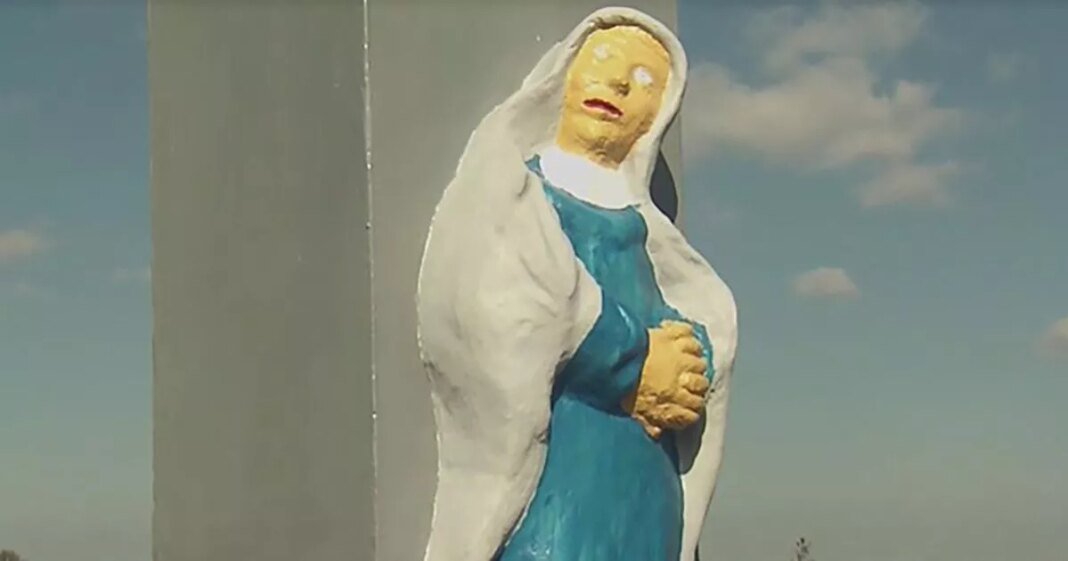Villagers in a small community are outraged following a recent transformation of a Virgin Mary statue they have revered for over two centuries, which now bears a resemblance to a character from the popular animated series, The Simpsons.
A poorly executed renovation of the Blessed Mother and Jesus statue in Stuszionka, a village in Silesia, southern Poland, has altered the once graceful shrine erected in 1820 into a distorted depiction. The figures now exhibit exaggerated features, such as swollen faces, hands, and toothless grins, deviating significantly from the original design. This unexpected change, carried out by an unidentified individual, has deeply unsettled the religious inhabitants of the 2,300-resident village, prompting local authorities to commit to a formal restoration of the shrine.
The locals have responded with a mix of anger and amusement to the “makeover” of the shrine, a registered monument that should only be handled by conservators. Images of the repainted statue circulated on social media, with comments humorously likening the new appearance to that of garden gnomes painted with low-quality materials.
The altered Jesus figure appears as though dressed in grey undergarments, while the Virgin Mary gazes skyward with bulging eyes and a toothless red smile, creating a peculiar expression.
Although the local Conservator of Monuments described the renovation as a “unique portrayal of the Virgin Mary” likely executed with good intentions, public opinion has been less forgiving. Criticism has been abundant, with one social media user decrying the act as a display of ignorance and lack of respect for religious symbols.
Another observer humorously remarked that the Virgin Mary now resembles a character from The Simpsons, suggesting a closer resemblance to Bart Simpson than the revered figure. Jokes about the incident flooded online platforms, with references to renowned cartoonist, Matt Groening, and lighthearted pleas for forgiveness for the mishap.
The only discernible clue regarding the perpetrator is a set of initials, “J.Cz.,” inscribed on the shrine. Authorities are inclined to believe the incident was not malicious, with some experts attributing the alteration to a well-meaning but misguided “artist.”
Despite intentions, the unauthorized modification has marred the monument, necessitating professional intervention to rectify the situation. The Silesian Conservator of Monuments plans to conduct a thorough assessment to evaluate the extent of the damage inflicted on the shrine.
This incident has evoked memories of a previous restoration mishap involving the “Ecce Homo” fresco at the Sanctuary of Our Lady of Mercy church in Borja, northern Spain, where a similar well-intentioned but flawed attempt garnered worldwide attention and amusement.
At Reach and our affiliated entities, we and our partners utilize data collected through cookies and other identifiers to enhance user experience, analyze usage patterns, and deliver personalized advertisements. You can manage your data preferences by opting out of data sharing or sales via the designated option on our website. By accessing our services, you consent to the use of cookies and acknowledge the practices outlined in our Privacy Notice and Cookie Policy.

